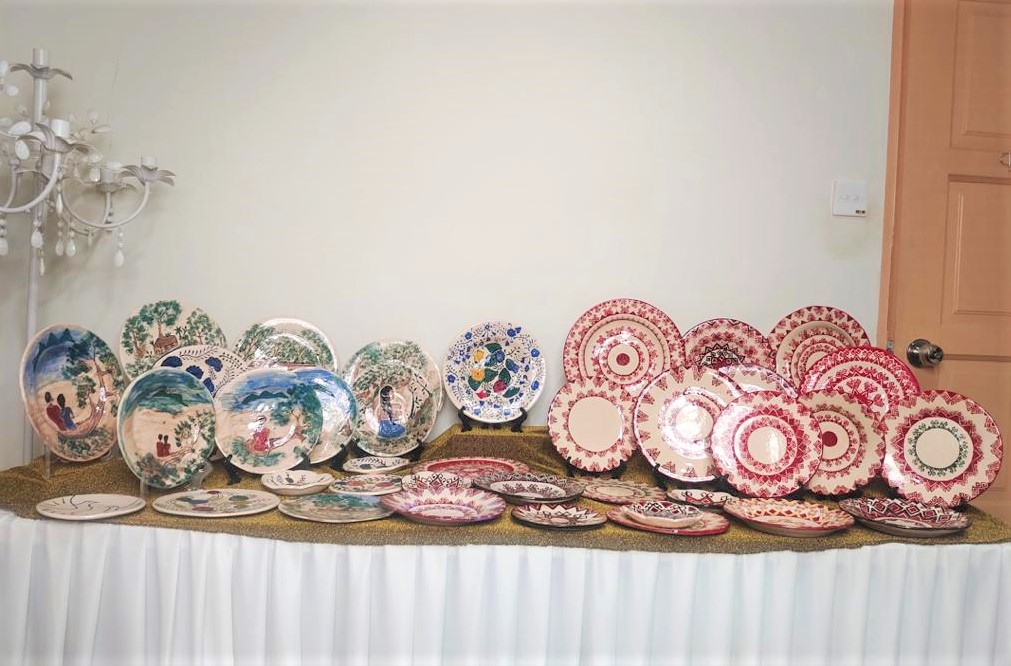Iban Motifs
A motif is a component of an image in both art and iconography. A motif may appear repeatedly in a pattern or design or it may just appear once in a piece of art. In Sarawak, the diverse and different ethnic groups also have their own motif designs in their traditional pieces. For this article, we will be discussing the Iban motifs and their applications.
First, the cultural motif known as the "Kelingai" is closely associated with the Iban community and it is a tattoo motif. This distinctive design represents a master craftsman in the art of carving in the Iban community. The beauty and smoothness of decorative lines serve as the foundation for the "Kelingai" design motif. In order to gorgeous motifs of "Kelingai," a high level of imagination was required. The majority of "Kelingai" designs are inspired by the beauty of nature, particularly in the forms of animals and plants. According to other Iban legends from different districts, "Kelingai" refers to the embellishment of the design of the "kala" (scorpion), which is why it needs to be adorned with lovely curves.
Next, Iban motifs can also be observed in textiles such as the Pua Kumbu. Iban’s textile motifs are divided into two categories which are the high motif and the low motif. Typically, Iban society's meaning and ideals are ingrained in the high-status motif.
One example of motifs found on the textiles is the tikus kasturi (tiger and mouse) pattern which is frequently used in abstract form. People who wear this fabric are said to be given the title of Bujang Berani, which is a moniker for a man who embodies bravery. It is also thought that the fabric created with a bird motif has the ability to heal the sick and will bring a person wealth, good fortune, and prosperity in all of their endeavours as birds are a sign of good omen. In Pua Kumbu weaving, the insect motif is frequently utilised. Examples include spiders, fireflies, scorpions, and centipedes.
Nowadays, the Iban motifs are adapted into various elements such as traditional mats and even as decorative plates. Entrepreneurs such as Janet Sudan are involved in the mat-making business and adapting the element of Iban motifs into her design. Craft entrepreneur Helena David Kalum has come up with the idea to produce hand-painted ceramic plates with traditional Iban motifs to keep the art alive.
The Iban motifs are not only beautiful but meaningful as well, so do appreciate them the next time you come across them.
(Pua Kumbu - Image taken from thetextileatlas.com)

(Plates painted by Helena – Image taken from newsarawaktribune.com)
References
Chelum, A., Durin, A., Lim Keh Nie, C., Hamizan, M., & Samaroon, M. (2018). The Iban Textiles. Journal Of Borneo-Kalimantan, 4(1), 1-7. https://doi.org/10.33736/jbk.915.2018
Fletcher, N. (2021). Plates with Iban motifs – preserving tradition. New Sarawak Tribune. Retrieved from https://www.newsarawaktribune.com.my/plates-with-iban-motifs-preserving-tradition/.
Irene, C. (2022). THE UNIQUE OF IBAN MOTIF IN MAT MAKING, IN BORNEO. Sites.google.com. Retrieved from https://sites.google.com/view/beritadimensi/venture/the-unique-of-iban-motif-in-mat-making-in-borneo.
Motif (visual arts) - Wikipedia. En.wikipedia.org. (2022). Retrieved from https://en.wikipedia.org/wiki/Motif_(visual_arts).
Tagie, G., Taharuddin, N., & Ibrahim, N. (2020). The ‘Kelingai Motif’ in Iban’s Tattoo Motif; A Case Study of Kampung Gayau Ulu Pantu, Sri Aman Sarawak. Idealogy Journal, 5(1), 8-16. https://doi.org/10.24191/idealogy.v5i1.180
